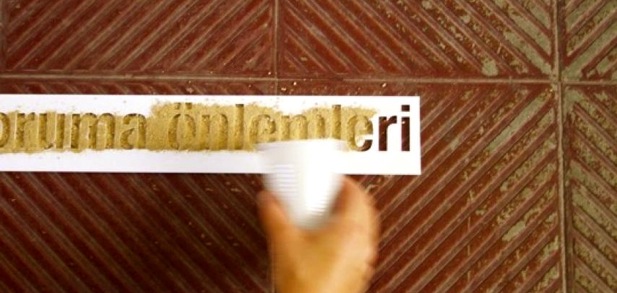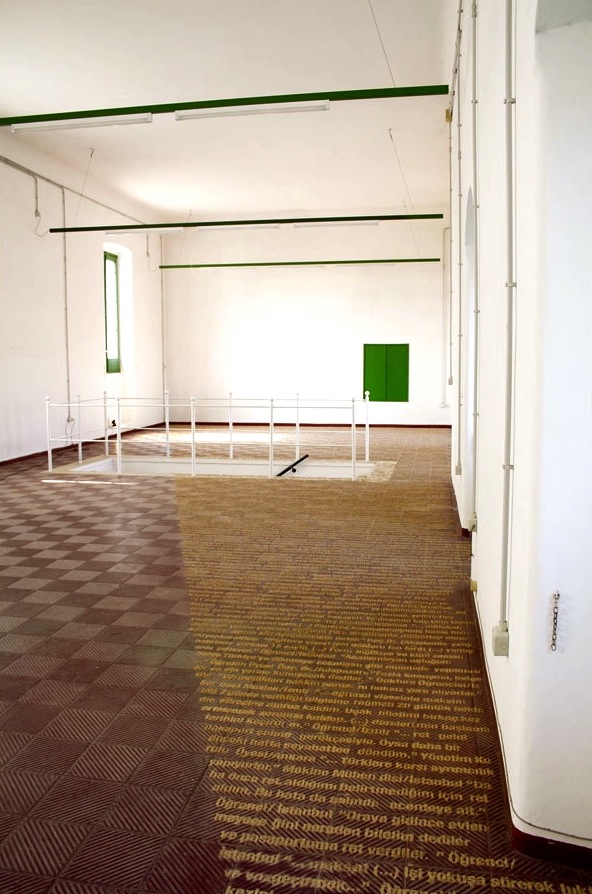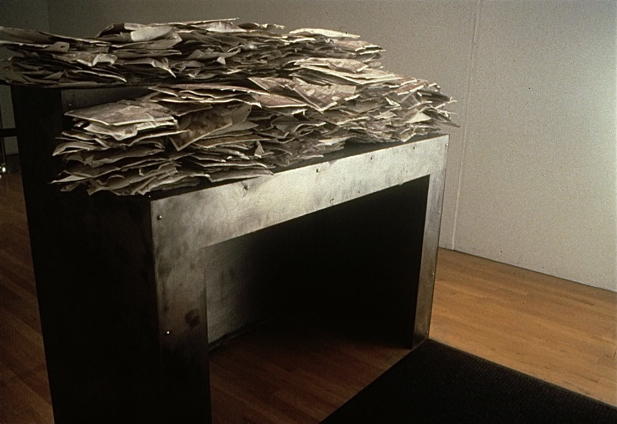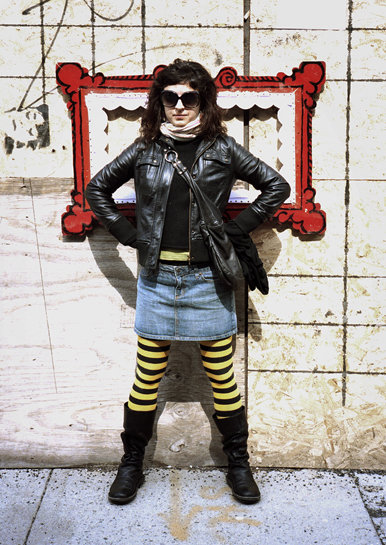First published on REORIENT

What does it mean to travel? To journey far away? Where, exactly, do we go? There is a geometrical principle that always brings relief to those who embark on the adventure of travelling: parallel lines never meet. Thus, leaving a place also implies not encountering it again, or at the very least, leaving it behind and not facing its present again. The French writer Georges Perec (1936 – 1982) reminds us in Species of Spaces of the ’surprise and disappointment of travelling. The illusion of having overcome distance, of having erased time. To be far away. Or else, rather, to discover what you’ve never seen, what you didn’t expect, what you didn’t imagine’.
The illusion of leaving places behind – often associated with forgetting, too – begins to crumble as we become familiar with the kind of world maps necessary for travelling, and realise that vertical lines all conjoin at the North and South Poles, even though they run exactly parallel at the equator line. There are no parallel lines, for all lines must meet up somewhere. The line is not simply a division marker, but also an indicator of time and direction, so that at the same time that lines meet up with each other, they also prevent movement and encircle the earth in a grid that is not necessarily invisible.
Crossing from one country to another, across East and West, North and South, rich and poor, war and peace, the reality of lines once thought to be imaginary is revealed. In Who Draws the Line?, a series of site-specific installations placed in public spaces in different cities, Turkish artist Devrim Kadirbeyoğlu maps out the frustration of citizens of the third world, in particular her native Turkey, with national borders and the tortuous journeys – both temporary and permanent – to promised lands. According to the artist, the project was born out of her long-time frustration with borders and visas:
Since the 1980s, due to political unrest in the country, it’s been difficult for citizens of Turkey to apply and obtain visas, and gathering all the documents for the application takes weeks. In the past, one had to get in line outside the consulates at 5 AM in the morning, winter or summer, and wait for six or seven hours only to submit the application. Then, stress would build up waiting for another week or two for the decision of the consulate.

Time is not only necessary to navigate through her work, but it also consumes and erodes the final product, allowing her artwork to expand infinitely into memory as an experience
In 2009, Kadirbeyoğlu received an email alerting her about the Visa Hotline Project initiated by the Economic Development Foundation of Turkey, which was established to collect complaints from Turkish citizens around the world regarding visa-related difficulties. In 2011, the artist requested access to the hotline’s complaint letters received between November 2009 and January 2010, and selected 160 quotations, which she laboriously stenciled by hand in soil onto the floors of public spaces. ‘The words made of earth are erased with each viewer’s footstep and gust of wind, reflecting [the fate of] personal stories that have not been formally recorded for generations’, she says.
Unlike paintings and sculptures, installations are not meant to be consumed or grasped immediately. As art installation historian Julie H. Reiss notes, ‘… Art on a room scale must be explored and traversed to be grasped, and that exploration, however brief, takes time’. In Kadirbeyoğlu’s series of installations, time is not only necessary to navigate through her work, but it also consumes and erodes the final product, allowing her artwork to resist being collected, and as a result, expand infinitely into memory as an experience.
The artist was not only interested in fleeting experiences as a form of memory – a theme commonplace in the environments and situations that define installation art – but also in what she describes as an attempt to reposition production as a theatrical extension of daily life:
I’m interested in the idea of having the work of art interact with viewers. They approach the work, go around, inside, or over it, and become the protagonist of the story being told. Through this interaction, as the viewer becomes part of the installation, even if it is for a brief moment, hopefully he/she leaves with different ideas, impressions, and lingering thoughts.
Speaking about the concept of the installation, Kadirbeyoğlu notes that:
It is with this site-specific installation that I realised the concept of border and territory, both re-appearing in my work, as much as repetition and multiplication. This derives from not having a personal space as a Turkish woman artist. Growing up in a Muslim country with its many restrictions on women, I always imagined living abroad, far away from all the mental and social taboos. Travelling outside of Turkey helped me observe what it means to have an identity, what it means to be foreign, what it means to be a citizen of a country, to have a religion.
Perhaps the journeys of the artist and her work conclude that travelling actually causes one to be or become foreign. In a former work from the early 2000s, Immigration, she reflected on what it meant to have an immigrant identity in the United States. She made hundreds of Xerox copies of her American visa, which she then soaked each page of in liquid clay, and subsequently dried and placed them on a kiln to burn.

Set in a post-9/11 world amidst the new challenges faced by peoples of the Middle East in the Western world, hundreds of these fragile pieces representing one person were laid on a stainless steel table bringing to mind a customs gateway at an airport, with the sound of passports being stamped in the background. The lines in her work run in different directions, however, encapsulating not only the present and the anxieties of the future, but also the turbulent past of the Turkish Republic, her youth during the 1980 military coup, and the period of her mother’s imprisonment, during which the artist was only six years old. Reflecting on her childhood, the artist notes:
My name, which means ‘revolution’ in Turkish, was given to me by my grandmother, who was a very modern and open-minded woman. During and after the coup, it was forbidden to pronounce ‘devrim’ as one could be imprisoned for doing so. My grandfather, out of irony and sarcasm, would instead call me ‘inkilap’ outside of home, which means revolution in Old Turkish.
The abroad, the ‘other’, and the idea of annihilating borders by showing their overwhelming presence in reality is something of an obsession for artists in the Middle East, where constraints on one’s personal identity are imposed both internally and externally. Kadirbeyoğlu nevertheless has brought over these regions of anxiety onto larger spaces, where she carries out three-dimensional investigations on the nature of space and time, embedded in rich contexts of identity and national history. Travel, or rather movement across inviolable, restricted lines surfaces in her production as an uncanny demand for more and better living spaces.
 Her work becomes a passing reminder that the past is not history yet, but the debris of the present
Her work becomes a passing reminder that the past is not history yet, but the debris of the present
Her installations Unknown (2003) and Here and Nowhere (2012) translate her questions about the nature of contemporary living spaces into sharp, yet ambiguous criticisms about the effects of production and industrialisation, which acquire a certain materiality in her own work, produced through endless processes of repetition and multiplication. The concept is broad but singular:
Defining order with the cycles or creation and destruction inspire my work, conceptually and aesthetically … Wars, natural disasters, or accidents occur and then reoccur. Time, as a loop, appears as a repetition and multiplication in my processes. It is a way to calm myself, a way to keep me sane … It is a way of reassuring myself that life will not disappear all of a sudden. Multiplication and repetition resonate as my own reality – a reality that comes from where all is one and one is all.
Kadirbeyoğlu is not too concerned about the passing nature of her installations, which disappear as soon as they are exhibited, or even while they are being exhibited. ‘Clearing off the table generates an emancipatory effect on my ideas … a fresh start … a new process, feeds my curiosity … The notion of the work being destroyed … helps me keep my thoughts serene’, she explains.
The artist has embarked early on a project – rather than specific works of art – that considers her and the world surrounding her as a part of a larger project wherein artistic interventions enable temporary fissures in discourses about identity, womanhood, immigration, technology, and/or industrial production.
What is an installation if not the art of the present tense? It is being unable to circumvent the anxiety of the future or find consolation in the past. The immediacy is not spontaneous or flashing; it is necessary to traverse the entire distance available. But this immediacy throws the artist ahead of herself, even at her own risk.
As the art critic Boris Groys once remarked:
If one is involved in a project – or more precisely, is living in a project – one is always already in the future. One is working on something that cannot yet be shown to others, that remains concealed and incommunicable. The project transports one from the present into a virtual future, causing a temporal rupture between oneself and those who still wait for the future to happen.
In this temporal rupture, one discovers a time freeze, which, far away from the background noise of daily life, reveals the tragic history of a region still scarred from wars, authoritarianism, and the untold stories of countless immigrants waiting to cross invisible borders that grow as cement blocks before them. Here, Kadirbeyoğlu’s work becomes a passing reminder that the past is not history yet, but merely the debris of the present, under which lurks the hidden message in a bottle left by Perec: My spaces are fragile: time is going to wear them away, to destroy them.
Cover image courtesy Erbil Balta / Vogue Turkiye Archive
1 comment:
Hello. Great job. I did not expect this on a Wednesday.
This is a great story. Thanks!
My web page ... iqracollege.com
my site :: www.iphonerecoveryspecialist.com
Post a Comment